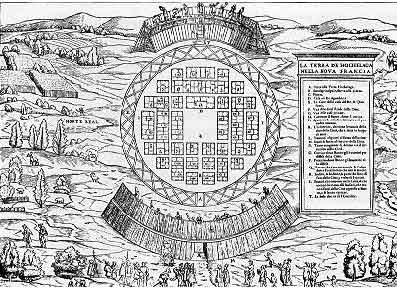Second Voyage of Jaques Cartier

Jacques Cartier's second voyage to the New World commenced on May 19, 1535, a little more than a year after his return from his initial expedition. This time, Cartier commanded a flotilla of three ships—the Grande Hermine, the Petite Hermine, and the Émérillon—with a crew totaling around 110 men. His main objective remained the same: to find a westward route to Asia that would allow France to participate in the lucrative spice trade.
Setting sail from St. Malo, France, Cartier and his fleet made their way across the Atlantic Ocean, guided by two Iroquois sons of Chief Donnacona, Domagaya and Taignoagny, who had returned from France for this expedition. Arriving in the Gulf of St. Lawrence, Cartier followed the St. Lawrence River, a waterway he hoped would serve as a route to Asia. Instead, the river led him deep into the North American continent.
In early September, the expedition reached what is now Quebec City. Cartier then continued to venture upstream and arrived at a native village named Stadacona, near present-day Quebec City. He also made his way to another settlement called Hochelaga, situated at the site of modern-day Montreal. Here, he scaled a hill and named it Mont Royal, providing the inspiration for the city's eventual name.
Despite the warm initial reception from the native people, relations soon deteriorated, particularly with Chief Donnacona. With the harsh winter closing in, Cartier decided to winter at Stadacona. His crew suffered from scurvy, a disease they were unprepared for, and many men died. It was only through the knowledge of the native people, who showed them how to prepare a concoction from a local tree (likely the white cedar), that they managed to combat the illness.
By spring, Cartier realized that the St. Lawrence River was not the passage to Asia he had hoped for. Frustrated and low on supplies, he decided to return to France. Before leaving, Cartier kidnapped Chief Donnacona and several other natives to take back to France as proof of his discoveries. These actions further strained relations between the French and the indigenous populations.
Cartier returned to France in July 1536, his ships laden with what he believed to be gold and diamonds but were later discovered to be iron pyrite and quartz, respectively. Despite failing to find a route to Asia or the wealth he had anticipated, Cartier's voyages laid the foundation for future French claims in North America and contributed to geographical knowledge of the continent.
.
 >
>